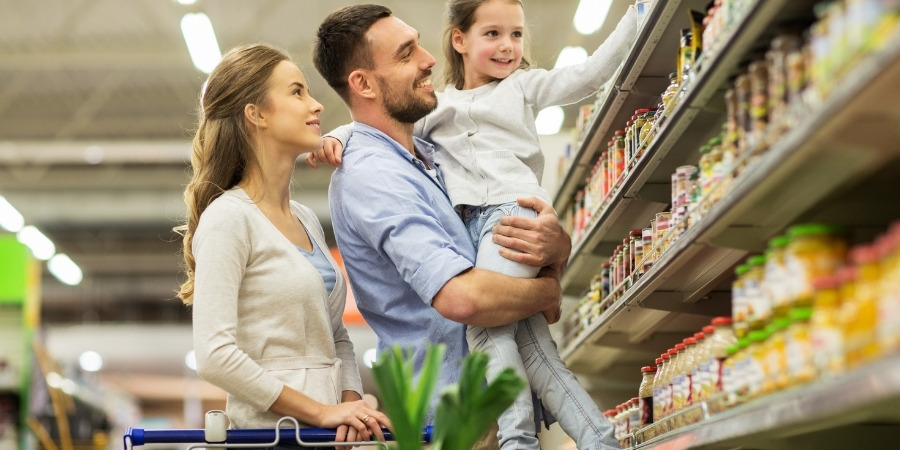Most consumers don’t give a lot of thought to what’s happening behind the scenes when they buy a product from a bricks-and-mortar or online store. But the reality is that there’s a lot involved in making that sale happen.
Shopper marketing focuses on supporting consumers who are already in the mindset to buy in making a final purchasing decision. Here’s a closer look at shopper marketing, along with real-world examples of shopper marketing for both the in-store and online experience.
About Shopper Marketing
Traditional marketing encompasses the entire buyer’s journey from the time they’re first introduced to a product to the moment they pay for it. Shopper marketing focuses on the final decision step of their journey.
When a consumer is holding a product in their hands in a store or looking carefully at a product description on a brand’s website, what pushes them to put it in their cart and proceed with the purchase?
This is where shopper marketing comes in. While other forms of marketing are concerned with the earlier stages of the buyer’s journey, such as raising awareness and increasing affinity for a particular product, service, or brand, shopper marketing is all about the third stage.
Another way of looking at it, from a brand perspective? Shopper marketing is your last chance to convince a customer to buy what you’re selling when they’re primed and in “shopping mode.” It relies on understanding shopper behavior at that very moment.
In-Store Shopper Marketing
When you walk into a retail store, examples of shopper marketing are all around you. That soda bottle with your name on it? Shopper marketing. Other examples include attention-grabbing displays, product demos, and enticing ambiance.
Point-of-purchase (POP) displays and point-of-sale (POS) displays are especially effective for driving impulse buys. These in-store fixtures come in a variety of forms and styles, from trend pods and towers to PDQ trays and dump bins. Depending on the type of product you want to showcase, there’s a POP or POS display that will work for your goals.
The equivalent of an in-store billboard, POP and POS displays also boost your brand presence thereby helping customers feel more connected to your brand and your products.
And while social media marketing may happen in the digital space, it has real-world applications in the context of shopper marketing. The majority of contemporary shoppers walk through stores with their phones in their hands. Geo-targeting allows you to serve up your ads to customers while they’re browsing the aisles.
While it may feel like “magic” to have an ad for the exact product you’re considering pop up on Instagram while you’re walking past it in the store, it’s not: it’s the magic of shopper marketing, the goal of which is to understand a shopper’s needs when they need them — and to proactively respond by filling that need.
Online Shopper Marketing
The same strategies can be applied in the digital space to the online shopping experience. For example, geotargeting to your brand’s target audience with relevant content across social media platforms can encourage them to purchase your products online, as well as in stores.
Speaking of your target audience, the best shopper marketing is data-driven. The more data you collect about your customers, the more effectively you’ll be able to target your marketing messages to their specific needs.
This is where optimizing your ecommerce channels comes in. In our current world, the buyer’s journey is anything but a straight line. Consumers now interact with brands across a multitude of touch points, including social media, content marketing, email marketing, pay-per-click, and retargeting. And that’s just online. Optimizing your efforts across every touch point maximizes your overall marketing strategy.
Influencer marketing can also be invaluable for fueling online sales. While influencers can play a role along every step of the path to purchase, they’re especially effective when it comes to driving lower-funnel goals. For example, when an influencer shares an engaging story of themselves or a family member using one of their products, it can be just the nudge a consumer needs to purchase the same product for themselves.
Again, while these strategies may occur in the digital space, their impact is felt both online and in stores. This is underscored by research indicating that by the year 2023, 58 percent of retail sales will be influenced by digital.
Marketing is a vital priority in today's competitive business landscape, but if you're not utilizing shopper marketing, you may be missing a major opportunity to connect with customers where and when it counts most. To learn more about how Bay Cities can help you get the most out of your shopper marketing, check out our POP and POS displays today.


/BC_Logo2_White.png?width=300&height=83&name=BC_Logo2_White.png)